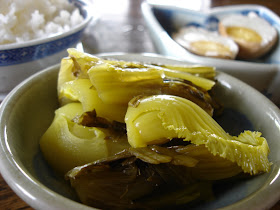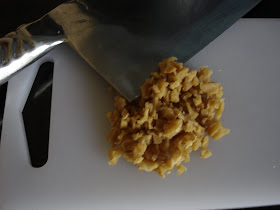
I have written this posting for another forum thread but I thought it is appropriate for me to copy and paste this in my blog. Living simply has always being a personal quest and I hope to live my life as sustainably as possible and in the meantime, share with others to do the same.
Since my last balek kampong trip to Singapore in January this year, I have often wondered whether the younger Singaporeans have lost their sense of frugality. I don’t think we have, we have simply forgotten what it takes to make it a necessity again. With time being tough for many out there in this economy downturn, buying luxury goods and expensive shopping isn't a top priority but still, it is in our national psyche to focus on building material wealth and remain in the top league of consumerism. Perhaps it is a reaction to the Great Depression or the Second World War or the post war syndrome that our parents and grandparents went through. Whatever the reasons, it has definitely become a value system that has infiltrated every facet of our daily lives back home.
Living simply has become a thing of the past, and now individuals long for more and more material possessions. We are indeed consumed by consumerism. Our newly acquired standard HDB flat or private condos are no longer acceptable. We need to gut it inside out and have it renovated from the floor to the ceiling. The kitchen needs to have the latest fittings and electrical appliances but sadly never have the opportunity to be utilised and cook the family meals. Our kids demanded their one year old mobile phones to be upgraded to a slimmer model with extra features. Clever advertisements have honed in on our internalised and erroneous belief that our children will be happier if they have every material wish fulfilled. What are we telling ourselves that new is better than old, material possession is happiness?
Sadly, we are all sucked into the marketing ploy that no matter how happy we are now, we will be so much happier if we buy the product advertised.As a recession looms over us, many will be asking "Do we need to slash our food bills?"
Living simply has become a thing of the past, and now individuals long for more and more material possessions. We are indeed consumed by consumerism. Our newly acquired standard HDB flat or private condos are no longer acceptable. We need to gut it inside out and have it renovated from the floor to the ceiling. The kitchen needs to have the latest fittings and electrical appliances but sadly never have the opportunity to be utilised and cook the family meals. Our kids demanded their one year old mobile phones to be upgraded to a slimmer model with extra features. Clever advertisements have honed in on our internalised and erroneous belief that our children will be happier if they have every material wish fulfilled. What are we telling ourselves that new is better than old, material possession is happiness?
Sadly, we are all sucked into the marketing ploy that no matter how happy we are now, we will be so much happier if we buy the product advertised.As a recession looms over us, many will be asking "Do we need to slash our food bills?"
Of course, the imminent recession is a worry for the young ones, my wife and I have been there more than once. Casting our minds back to where we have to trace every cent and experiment with cheap cuts of meat and living frugally. We had to use up leftover with something like fried rice and chicken carcasses. (after the fleshy parts had been consumed, we had them thrown back into the stock for making soup.) As a result, we are old hands (haha) and without a doubt we"ll be able to tide over this recession with our simple living and frugality again.



















 Ingredients:
Ingredients:













